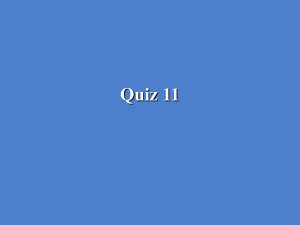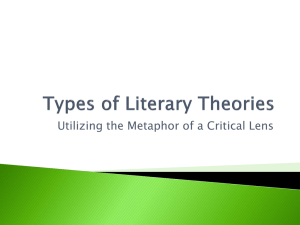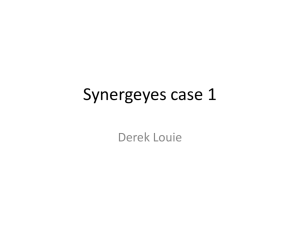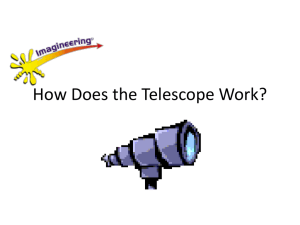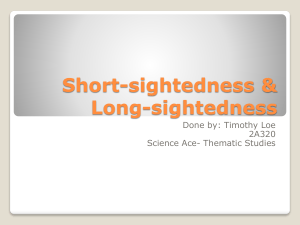Dr Colton`s MCAT formula review sheet
advertisement
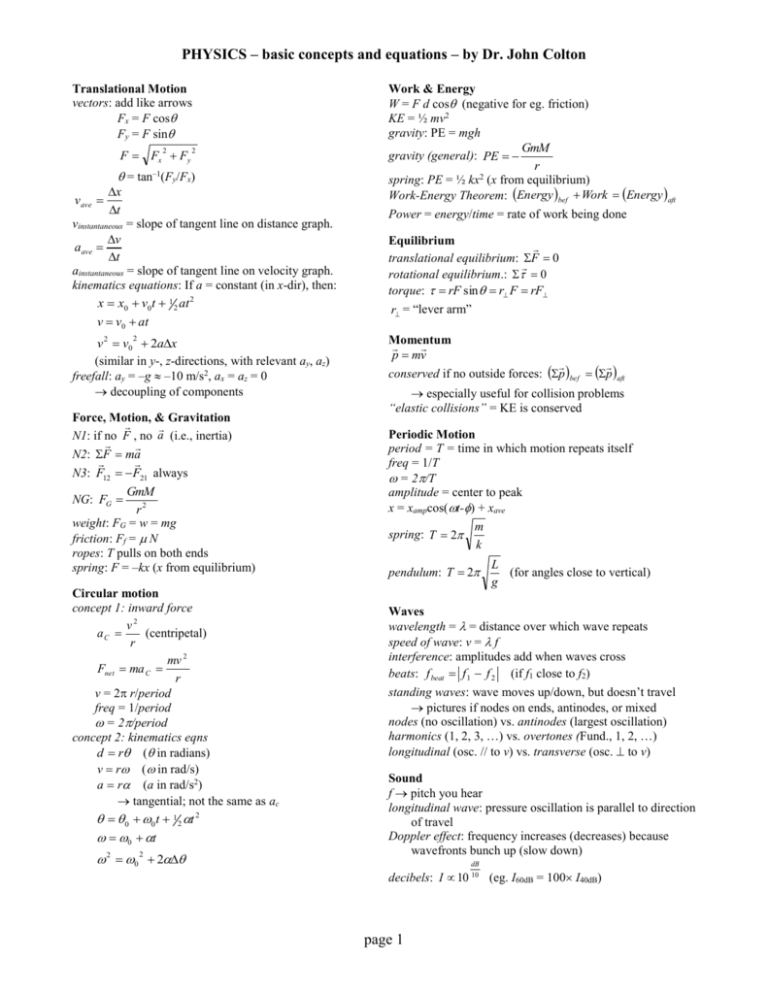
PHYSICS – basic concepts and equations – by Dr. John Colton Translational Motion vectors: add like arrows Fx = F cos Fy = F sin F Fx Fy 2 v ave 2 = tan–1(Fy/Fx) x t vinstantaneous = slope of tangent line on distance graph. v a ave t ainstantaneous = slope of tangent line on velocity graph. kinematics equations: If a = constant (in x-dir), then: x x0 v0t 1 2 at 2 v v0 at v 2 v0 2ax (similar in y-, z-directions, with relevant ay, az) freefall: ay = –g –10 m/s2, ax = az = 0 decoupling of components 2 Force, Motion, & Gravitation N1: if no F , no a (i.e., inertia) N2: F ma N3: F12 F21 always GmM r2 weight: FG = w = mg friction: Ff = N ropes: T pulls on both ends spring: F = –kx (x from equilibrium) NG: FG Circular motion concept 1: inward force v2 aC (centripetal) r mv 2 Fnet ma C r v = 2r/period freq = 1/period = 2/period concept 2: kinematics eqns d r ( in radians) v r ( in rad/s) a r (a in rad/s2) tangential; not the same as ac 0 0 t 1 2 t 2 0 t 2 0 2 2 Work & Energy W = F d cos(negative for eg. friction) KE = ½ mv2 gravity: PE = mgh GmM gravity (general): PE r spring: PE = ½ kx2 (x from equilibrium) Work-Energy Theorem: Energy bef Work Energy aft Power = energy/time = rate of work being done Equilibrium translational equilibrium: F 0 rotational equilibrium.: 0 torque: rF sin r F rF r = “lever arm” Momentum p mv conserved if no outside forces: p bef p aft especially useful for collision problems “elastic collisions” = KE is conserved Periodic Motion period = T = time in which motion repeats itself freq = 1/T = 2/T amplitude = center to peak x = xampcos(t-) + xave spring: T 2 m k pendulum: T 2 L (for angles close to vertical) g Waves wavelength = = distance over which wave repeats speed of wave: v = f interference: amplitudes add when waves cross beats: f beat f 1 f 2 (if f1 close to f2) standing waves: wave moves up/down, but doesn’t travel pictures if nodes on ends, antinodes, or mixed nodes (no oscillation) vs. antinodes (largest oscillation) harmonics (1, 2, 3, …) vs. overtones (Fund., 1, 2, …) longitudinal (osc. // to v) vs. transverse (osc. to v) Sound f pitch you hear longitudinal wave: pressure oscillation is parallel to direction of travel Doppler effect: frequency increases (decreases) because wavefronts bunch up (slow down) dB decibels: I 10 10 (eg. I60dB = 100 I40dB) page 1 PHYSICS – basic concepts and equations – by Dr. John Colton Fluids and Solids density: = m/V specific gravity: SG = /H20 H20 = 1 g/cm3 = 1000 kg/m3 pressure: P = F/A underwater: P = Patm + gd Pascal’s Law: any applied pressure is transmitted throughout fluid Archimedes’ Principle: fluid helps support weight buoyant force: B = fluid Vobject g (= weight of the “displaced fluid”) Moving fluids, at positions 1 and 2 along path: A1 v1 = A2 v2 (Eqn of continuity, mass conserved) P1 + ½v12 + gy1 = P2 + ½v22 + gy2 (Bernoulli’s Law, energy conserved) Solids, with applied loads (pushes or pulls): stress: = F/A strain: = L/L tensile strength: maximum before breaking Young’s modulus: Y = /, slope of stress/strain Electrostatics Coulomb’s Law: FC kqQ (force between q and Q) r2 kq (potential to feel a force from q) r2 F = QE (actual force felt by Q) field lines: 1. Go away from positive q, towards negative q 2. Do not cross 3. Have highest density where field is strongest 4a. Close to a charge look like single charge 4b. Far from all charges look like single charge (if there is a net charge) kqQ potential energy: PE (energy of Q due to q) r kq electric potential: V (potential to have PE from q) r work: W = Q V (work to move Q from V1 to V2) special case: if constant E then V = E x equipotential lines: 1. Always to field lines 2. Go “around the hill” 3. Most closely spaced where E is strongest 4a. Close to a charge look like a single charge 4b. Far from all charges look like single charge (if there is a net charge) electric field: E Magnetic Fields magnetic force: F = qvBsin = qvB = qvB electric current: I = q/t force on current-carrying wire: F = ILBsin constant B, no E: circular/helical motion r = mv/qB Electric Circuits resistors: Ohm’s Law: VR = IR (VR = resistor’s voltage drop) series resistors: Req = R1 + R2 parallel resistors: Req = (1/R1 + 1/R2)–1 Power lost by each resistor: PR = IR2R = VR2/R power supplied by battery: PB = VB IB Kirchoff’s laws: junction rule: at a junction, Iin = Iout loop rule: around a loop, Vincreases = Vdecreases capacitors: VC = Q/C series capacitors: Ceq = (1/C1 + 1/C2)–1 parallel capacitors: Ceq = C1 + C2 PEcap = ½ C V2 charging/discharging capacitors: “RC time constant” = RC Light f color you see transverse wave: oscillation in electric/magnetic fields is to direction of travel (and E, B to each other) cf (c = 3108 m/s) Law of reflection: incident = reflected Law of refraction (Snell’s law): n1sin1 = n2sin2 measured from the perpendicular n = “index of refraction”, speed of light = c/n total internal reflection: for >C; critical C = sin–1(n2/n1) Lenses converging (convex) vs diverging (concave) lens equation: 1/f = 1/do + 1/di real image: can put paper/film there to see it virtual image: cannot put paper there at image spot to see it like looking through magnifying glass Sign conventions for lens equation: (assuming light rays come from the left) positive negative do if on the left of the if on the right of the lens lens (can only happen in a multiple lens problem) di if on the right of if on the left of the the lens lens (means a real (means a virtual image) image) f if a convex lens if a concave lens m if right-side up if upside-down magnification: M = hi/ho (definition) M = –di/do (useful for calculation) multiple lenses: di of 1st lens becomes do of 2nd lens each distance measured from its own lens total magnification: Mtot = M1 M2 … spherical mirrors: f = R/2 “lens equation” still works slightly different sign conventions page 2


